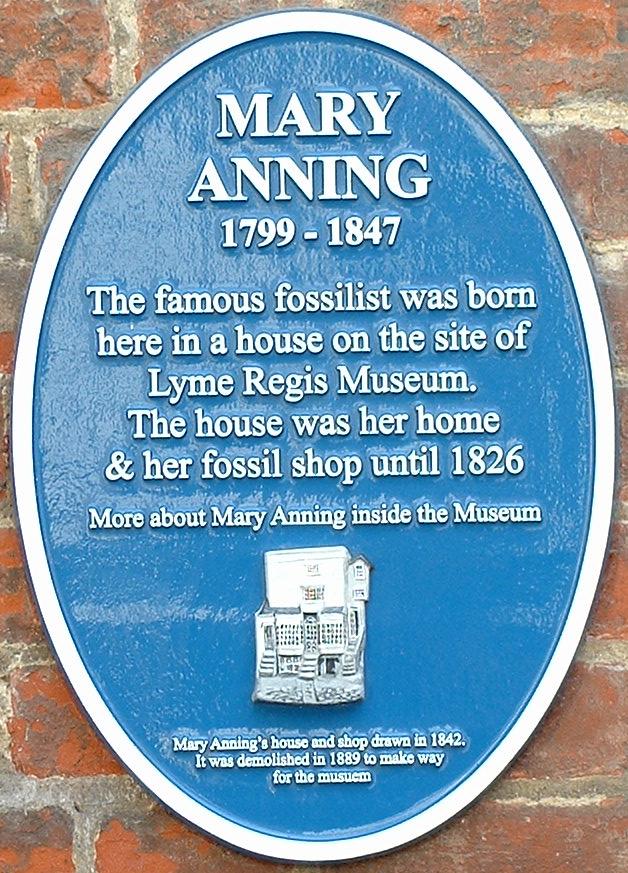Mary Anning was born in the English seaside town of Lyme Regis, Dorset in 1799.She lived with her family along the Jurassic Coast which became a tourist hotspot in the late 18th century, when local residents started scouring the coast for ‘curiosities’ to sell to tourists. Mary joined her brother Joseph and father Richard on fossil-hunting expeditions when she was a young girl, something that not many girls in the Georgian era would have been allowed to pursue.

When Mary was 12 years old, she and her brother made their first notable discovery when they found a 4-foot Ichthyosaur skeleton. It is one of the first Ichthyosaurs discovered in the UK with preserved stomach contents. News of the find travelled to Henry Hoste Henley who paid the family around £23 for the skeleton and in May 1819, the fossil was sold to Charles Konig who worked at the British Museum, London.
Between the ages of 13 and 19, Mary discovered more skeletons along the Jurassic Coast including the first complete skeleton of a Plesiosaurus. When she was 27 years old, Anning purchased a house in Lyme Regis which she opened up as a shop named Anning’s Fossil Depot. Her shop drew much attention and fossils were bought from her collection by famous geologists, King’s and museum employees from around the world.
Anning’s discoveries influenced the scientific community and became hugely significant to new thoughts about the Earth’s history and the natural world, although she rarely got recognition for her input because she was a woman. Even though she was more knowledgeable about fossils, palaeontology and geology than the men that purchased fossils from her, Mary’s thoughts were never published under her name within her lifetime. Like much of history, women’s names were erased, and men took the credit for the hard work that women had successfully undertaken. In addition, her working class status meant she was not allowed to attend university or join scientific societies
In 1838, when she was 39 years old, Mary Anning was awarded an annual pension from the British Association for the Advancement and the Geological Society of London in return for her extensive contributions to geology and palaeontology. She was also made the first honourary member of the Dorset County Museum in her home county.
On 9th March 1847, aged just 47, Mary Anning passed away from breast cancer. For many years after her death, her work was forgotten about. When scientific thoughts about fossils became popular again, Mary’s work was rediscovered, and she is now seen as one of the most important fossil-hunters of all time. Skeletons that Anning found are on display at the Natural History Museum in London whilst the Lyme Regis Museum, which was built on the land of her former home, honours the fossilist with a dedicated Mary Anning Wing, fossil walks and a Blue Plaque on the Museum front. The Jurassic Coast, where Mary began her fossil hunting as a child, is now a UNESCO World Heritage Site.
